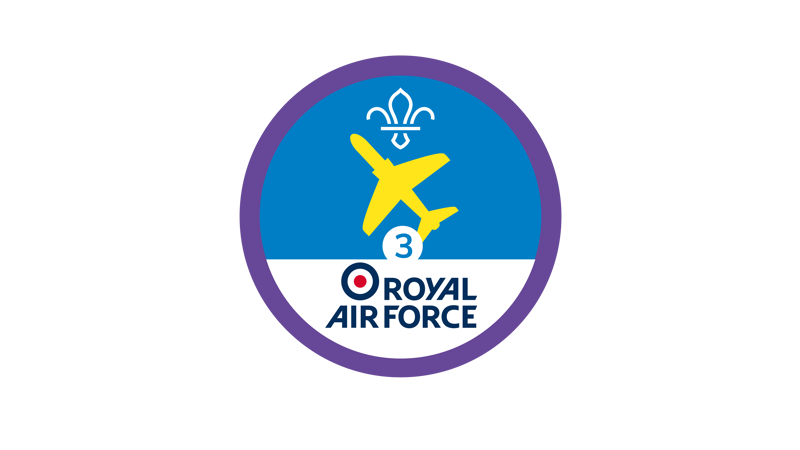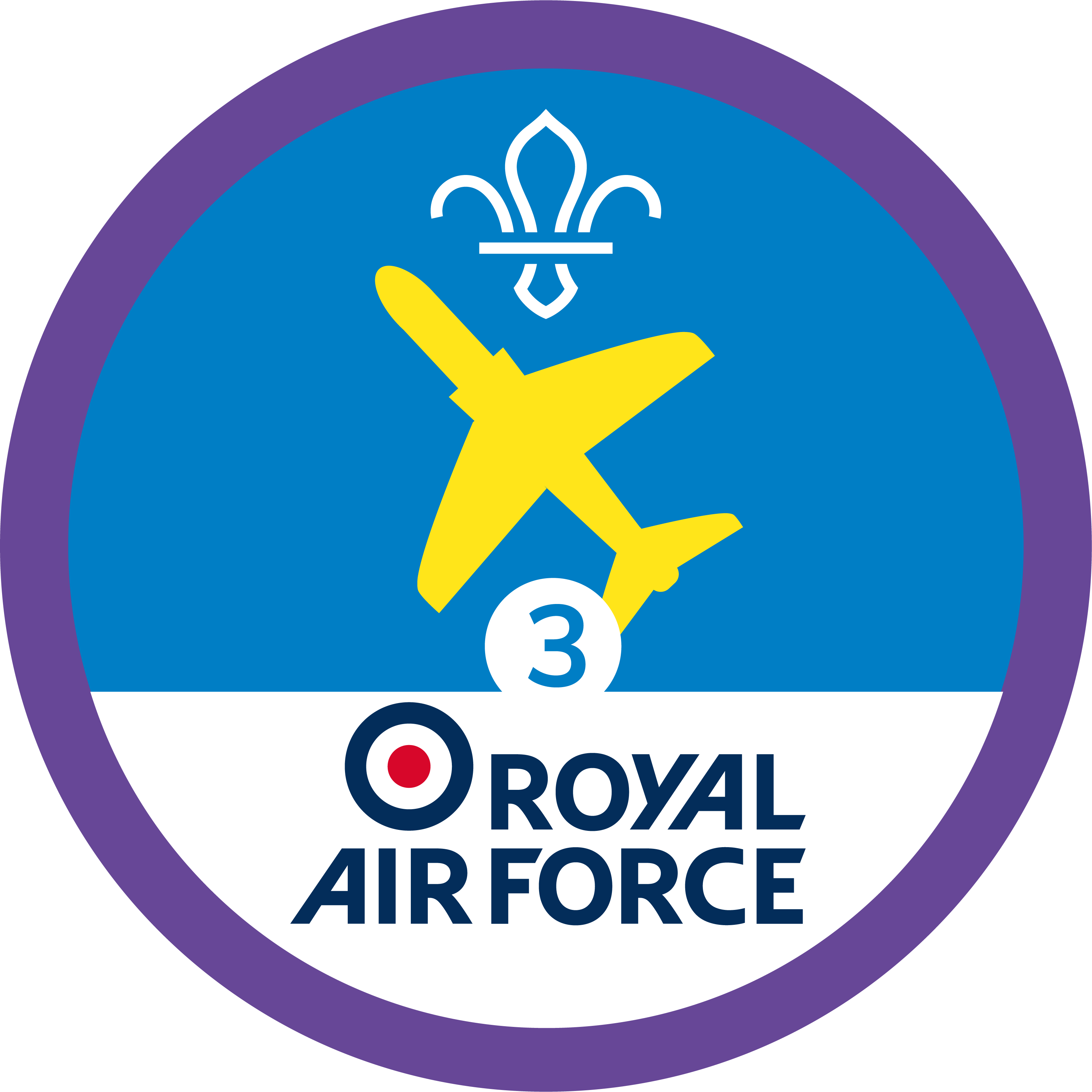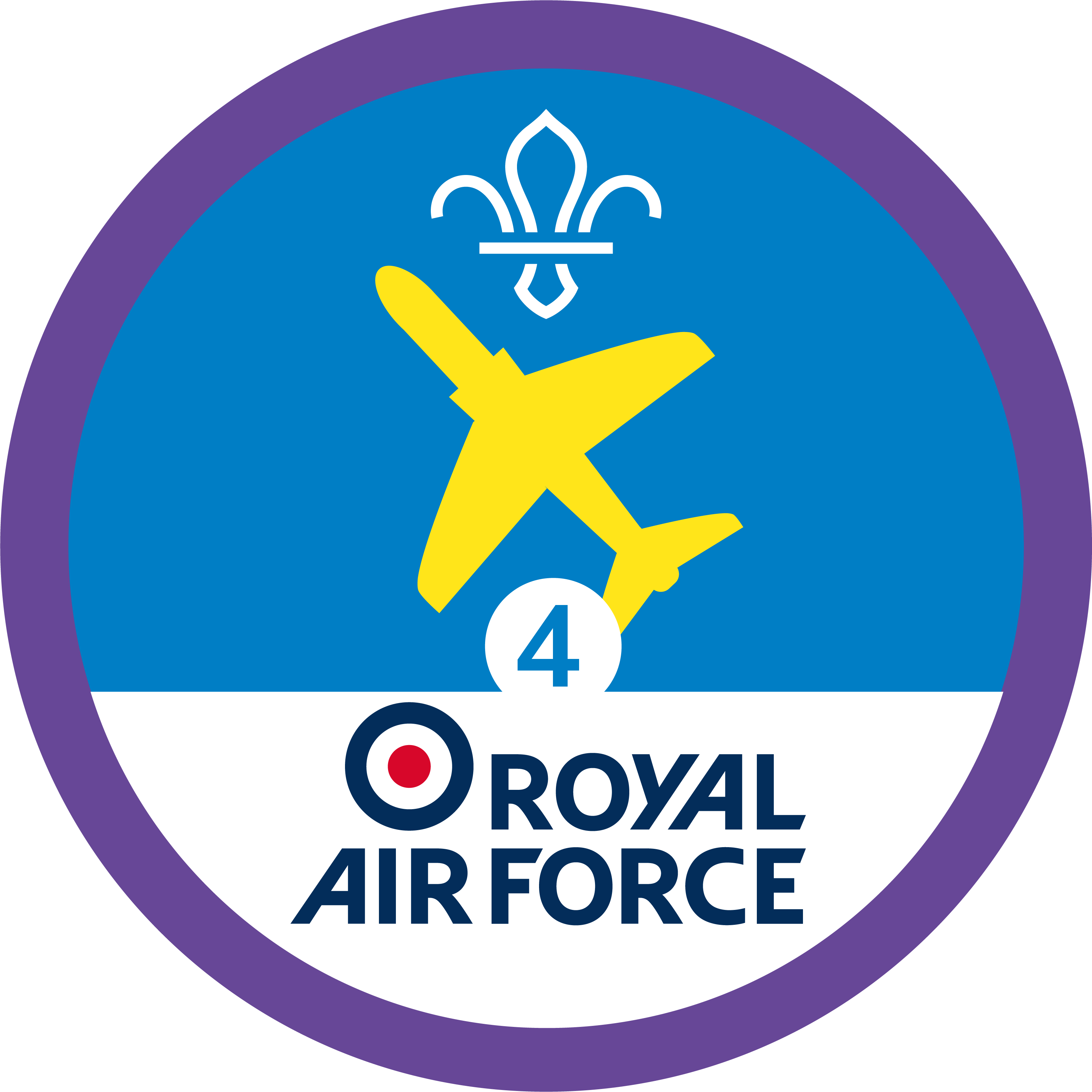
Find your fleet
You’ll need
- Access to a computer
- Access to the internet
Before you begin
- Make sure you have enough computers or tablets that one can be shared between four-to-six people. Large groups could use projection equipment to help everyone feel involved.
- Make sure you have a stable enough internet connection to run this activity. You could solve the problems of internet or equipment access by running this activity as part of a visit to a library or as a challenge to do at home. Printouts of images from the web could also be used instead of computers.
- The two parts of this activity cover different stages of the Air Activities Badge. The first part covers some of stage four, while the second part covers some of stage three. Your group might find one part is easier or harder than the other. Run them together or separately, depending on the group’s skill level, for those working towards their badge.
- Google Earth is ‘a globe that sits inside your PC. You point and zoom to anyplace on the planet that you want to explore.’ This doesn’t require a download, just a stable internet connection.
- Find aircraft on Google Earth by zooming into spots where you’re likely to see aircraft on Earth. This might include private and commercial airfields, airports, air museums, flying clubs, industrial premises and military bases. Sometimes, you’ll even come across aircraft in flight.
- If what you’re looking at seems blurry, you could try looking somewhere else. There are over 40,000 airports in the world. You should still be able to pick out the shape of the wings and colour of the paint on aircraft, in spite of any blurriness.
- When looking for aircraft you’ve seen recently in real life, bear in mind that Google Earth doesn’t show real-time images. What you’re looking at could be as much as 18 months old.
- Try to find a better angle of what you’re looking at. Use Google Street View to find a ground-level street to view from, on both Google Earth and Google Maps. You might be able to spot something from there. Here’s an example.
- If you need any more help using Google Earth on your devices, check out Google Earth Help.
Run the activity
- Run part one. Split into groups of between four and six people. Each group will need one computer or tablet connected to the internet.
- On a whiteboard or flipchart, write up this brief for everyone to follow. You should also read it aloud and make sure everyone follows. ‘The mission is to find six different aircraft using Google Earth to make up your fleet. Each aircraft should have at least one of the following characteristics, which can be checked online using sites like flightradar24 and the RAF website:’
-
- I can transport about 800 passengers
- I can carry at least 15,000kg of cargo
- I could be used to help with search and rescue
- I could be used by photographers to take overhead shots
- I can be taken out for pleasure
- I can be used to help manage forest fires
- I’ve been used as an airborne nuclear deterrent in the past
- Everyone should load Google Earth. When everyone’s ready, give them 30 minutes to complete the task. Leaders and helpers should go around the room and help where needed.
- When the time is up, everyone should gather to compare their fleets and discuss what they found.
- Run part two. Everyone could stay in their groups, if you’ve carried on from part one. If not, split off into new groups of between four and six people. Each person should take turns to use your shared device independently.
- Each person should use a search engine or look through pictures to find images of six aircraft that interest them.
- Each person should assemble their fleet by pasting copies of each image onto a Word document. Then, they should show the rest of their group. Talk about what each aircraft is for and what characteristics it has.
Reflection
Everyone needed to pool their digital knowledge and aircraft enthusiasm to assemble their group and individual fleets. The groups needed to look in different places on Google Earth to find different kinds of aircraft. How many different places did you agree upon to search for your aircraft? When you compared findings with other groups afterwards, did anyone find any similar-looking aircraft? Did anyone find any aircraft that particularly stood out? People often find peculiar things on Google Earth and Maps that just happened to be going on as Google were taking pictures.
Safety
All activities must be safely managed. You must complete a thorough risk assessment and take appropriate steps to reduce risk. Use the safety checklist to help you plan and risk assess your activity. Always get approval for the activity, and have suitable supervision and an InTouch process.
- Online safety
Supervise young people when they’re online and give them advice about staying safe. Take a look at our online safety or bullying guidance. The NSPCC offers more advice and guidance, too. If you want to know more about specific social networks and games, Childnet has information and safety tips for apps. You can also report anything that’s worried you online to the Child Exploitation and Online Protection Command. As always, if you’ve got concerns about a young person’s welfare, including their online experiences, follow the Yellow Card to make a report.
- Phones and cameras
Make sure parents and carers are aware and have given consent for photography.
You could tailor your characteristics for the Google Earth search in part one, and have your group find more or less specific kinds of aircraft. If everyone finds it tough to find aircraft or aircraft images, give them some aircraft coordinates to get them started.
- Make sure that everyone has everything they need to complete the tasks in this activity. Don’t assume that everyone will have the same skill level using Google Earth, Maps and Street View, or a search engine, on the devices you’re using.
- Make a judgement on whether you have enough devices and helpers to give everyone the support they need. If you think it’s going to be difficult, a trip to a local library or archive might make things easier.
- See if anyone knows about any apps or settings that can help improve their experience. Using device screen readers and adjustments to device light and sound settings can make a big difference for some people.
All Scout activities should be inclusive and accessible.
If you’ve got time for an extension, play a few rounds of the Wiki-word association game. Groups should go to a preselected article on Wikipedia. They should then be given a target article to try and reach. However, they may only click on the hyperlinks in the article they’re on to navigate through the site. Everyone will need to use their knowledge of the target article and think before they click! You could turn this into a race, or count how many clicks it takes. For instance, start from ‘bongo drum’ and get to ‘Concorde’.
If your group is keen on aircraft, plan a trip to a local airfield and see if the group can assemble new fleets there. There’s a better chance of spotting more aircraft in flight. Leaders should take a look at the Access to Airfields guidance and find more information on air activities.
Everyone had the opportunity to search Google Earth and search engines for aircraft that they’re interested in, and to share their interests with their group and others.

